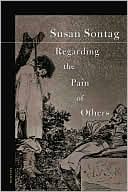Category Books
- Fiction Books & Literature
- Graphic Novels
- Horror
- Mystery & Crime
- Poetry
- Romance Books
- Science Fiction & Fantasy
- Thrillers
- Westerns
- Ages 0-2
- Ages 3-5
- Ages 6-8
- Ages 9-12
- Teens
- Children's Books
- African Americans
- Antiques & Collectibles
- Art, Architecture & Photography
- Bibles & Bible Studies
- Biography
- Business Books
- Christianity
- Computer Books & Technology Books
- Cookbooks, Food & Wine
- Crafts & Hobbies Books
- Education & Teaching
- Engineering
- Entertainment
- Foreign Languages
- Game Books
- Gay & Lesbian
- Health Books, Diet & Fitness Books
- History
- Home & Garden
- Humor Books
- Judaism & Judaica
- Law
- Medical Books
- New Age & Spirituality
- Nonfiction
- Parenting & Family
- Pets
- Philosophy
- Political Books & Current Events Books
- Psychology & Psychotherapy
- Reference
- Religion Books
- Science & Nature
- Self Improvement
- Sex & Relationships
- Social Sciences
- Sports & Adventure
- Study Guides & Test Prep
- Travel
- True Crime
- Weddings
- Women's Studies
Regarding the Pain of Others » (REV)

Authors: Susan Sontag
ISBN-13: 9780312422196, ISBN-10: 0312422199
Format: Paperback
Publisher: Picador
Date Published: February 2004
Edition: REV
Author Biography: Susan Sontag
Susan Sontag's most recent novel, In America, won the National Book Award in 2000. Her other books include four novels, a collection of stories, a play, and nonfiction works, among them On Photography and Illness as Metaphor. She lives in New York City.
Book Synopsis
A brilliant, clear-eyed new consideration of the visual representation of violence in our culture—its ubiquity, meanings, and effects
Watching the evening news offers constant evidence of atrocity—a daily commonplace in our "society of spectacle." But are viewers inured -or incited—to violence by the daily depiction of cruelty and horror? Is the viewer's perception of reality eroded by the universal availability of imagery intended to shock?
In her first full-scale investigation of the role of imagery in our culture since her now-classic book On Photography defined the terms of the debate twenty-five years ago, Susan Sontag cuts through circular arguments about how pictures can inspire dissent or foster violence as she takes a fresh look at the representation of atrocity—from Goya's The Disasters of War to photographs of the American Civil War, lynchings of blacks in the South, and Dachau and Auschwitz to contemporary horrific images of Bosnia, Sierra Leone, Rwanda, and New York City on September 11, 2001.
As John Berger wrote when On Photography was first published, "All future discussions or analysis of the role of photography in the affluent mass-media societies is now bound to begin with her book." Sontag's new book, a startling reappraisal of the intersection of "information", "news," "art," and politics in the contemporary depiction of war and disaster, will be equally essential. It will forever alter our thinking about the uses and meanings of images in our world.
Los Angeles Times
Sontag is in top form: firing devastating questions and providing no answers for shelter. She hands us no morality meter, designed to scan a picture and flash up "necessary experience" in green or "atrocity-porn" in red. Instead, she quotes Plato -- the tale of Leontius reluctantly feasting his eyes on executed criminals -- to show that "the attraction of mutilated bodies" has always been recognized, not least in the obsession of Christian art with naked bodies in pain. Only in the 17th century are depictions of atrocity hitched to the notion that war is cruel and should be prevented. But "most depictions of tormented, mutilated bodies do arouse a prurient interest.... All images that display the violation of an attractive body are, to a certain degree, pornographic." (Sontag exonerates Goya, whose brutalized victims are, like their torturers and violators, "heavy, and thickly clothed"). — Neal Ascherson
Table of Contents
Subjects
 Essays
Essays  American Essays
American EssaysArt, Architecture & Photography
 Art History & Criticism
Art History & Criticism  Art by Subjects
Art by SubjectsArt, Architecture & Photography
 Photography
Photography  Photography - History, Criticism, & Collections
Photography - History, Criticism, & CollectionsEntertainment
 Media
Media  Mass Media & Crime
Mass Media & CrimeHistory
 Military History
Military History  Individual Wars
Individual WarsNonfiction
 Social Sciences
Social Sciences  Media & Communications
Media & CommunicationsScience & Nature
 Social Sciences
Social Sciences  Media & Communications
Media & CommunicationsSocial Sciences
 Media & Communications
Media & Communications  Mass Media & Crime
Mass Media & CrimeNonfiction
 Entertainment
Entertainment  Media
Media
